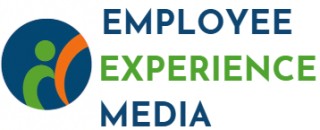
The Importance of a Doctor's Note for Returning to Work
Why a Doctor's Note is Crucial for Returning to Work
When an employee is returning to work after an illness, injury, or medical leave, a doctor's note often serves as a pivotal document. This note, now commonly viewed as a work note, assures employers that their employees are fit to resume their duties safely. It forms an essential component of return-to-work protocols in California business regulations and beyond. The main purpose of a doctor's note is to provide medical validation of an employee’s health status. It typically states that a physician has evaluated the employee and confirms their ability to undertake their work responsibilities without endangering themselves or others. Moreover, it might include any accommodations or changes necessary for a smooth transition back to the workplace. Most companies request a doctor's note as part of their internal policy. This process helps ensure compliance with labor regulations and supports occupational health standards. On another note, the requirement for medical documentation can help curtail misuse of sick leave. While the procedures may vary between organizations, a typical process might involve the employee submitting a doctor note template, either in a physical form or as a pdf, which can be easily filled in by the employee and certified by their healthcare provider. Free templates are often utilized, offering convenience and consistency. For more insights on how businesses handle employee matters post-illness and manage workplace access, you might find this article on monitoring employee access particularly enlightening. A medical professional or corporate lawyer can offer advice tailored to specific business requirements, ensuring both legal compliance and ethical standards are met by the employers. In summary, a doctor's note is not just a formality but a vital aspect of responsibly managing a workforce. Without it, both the employer and the employee might face avoidable risks and liabilities.Legal and Ethical Considerations
Legal and Ethical Dimensions of Doctor's Notes
Understanding the legal and ethical frameworks surrounding a doctor's note is vital for both employers and employees. The necessity of a doctor note when an employee returns to work after sick leave can be a nuanced issue. Legally, employers must navigate regulations carefully, often relying on guidance from a corporate lawyer or business lawyer to ensure compliance.
In many jurisdictions, including California, specific laws such as the California Family Rights Act mandate that businesses allow employees to take leave for medical conditions, while also potentially requiring a physician release or return work note to assess the readiness of the employee to return without further health risks. Employers need to balance the need for productivity with the ethical responsibility toward their employees, safeguarding their well-being.
Employers must also consider the format of doctor notes. A note template can help ensure all required information is captured, but it's crucial to maintain flexibility to address unique situations of individual employees. Providing a free and fill URL form or a downloadable pdf version facilitates the process.
Ethical considerations suggest that while a work note serves as a protective measure for the business, it should not inadvertently infringe on privacy or be discriminatory. For instance, a note work requirement should relate directly to the job duties and limitations, rather than acting as a barrier to employee reintegration.
To avoid potential legal pitfalls, collaboration with a lawyer corporate is often advised. Furthermore, implementing policies that comply with current legislation can enhance the overall employee experience, creating a supportive environment for returning employees.
Impact on Employee Experience
Enhancing Employee Well-being Through Doctor's Notes
The impact of a doctor's note on an employee’s return to work journey cannot be understated. At its core, the process is a blend of legal, ethical, and emotional facets that play a crucial role in shaping the overall employee experience. A doctor's note serves as a bridge between the employee and employer, providing necessary assurance regarding the employee’s medical condition and fitness to resume duties. However, the complexities surrounding this seemingly simple piece of documentation can significantly affect an employee’s work life and morale. For employees, a smooth transition back to work after a medical leave is often contingent upon understanding and empathy from their employers. Employers who integrate a thoughtful approach when managing medical releases can create a support system that reassures employees of their value within the organization. Conversely, mishandling of doctor's notes can foster workplace anxiety. For example, if employees feel rushed or pressured into returning work forms without adequate recovery time, they may experience heightened stress levels, impacting their work performance and satisfaction. Employers can adopt certain best practices to improve the experience of employees returning to work, such as:- Utilizing a consistent and clear note template to ensure all necessary information is filled out properly.
- Providing guidance and support for employees navigating medical note procedures, possibly through direct coordination with corporate lawyers if challenges arise.
- Facilitating open communication channels to help employees feel comfortable discussing their medical conditions and work capabilities upon return.
- Exploring company obligations to ensure compliance and avoid legal complications.
- Allowing flexibility in work arrangements to cater to employees’ transition needs post sick leave.
Best Practices for Employers
Employer Strategies for Managing Doctor’s Notes
Navigating the process of handling doctor’s notes can be challenging for employers. It requires a careful balance to uphold legal obligations while ensuring that the employee experience remains positive. To facilitate this, employers can adopt several best practices designed to streamline the return-to-work transition following a medical leave.- Implementing a Standardized Process
- Establishing a clear, straightforward procedure for submitting and processing doctor’s notes is crucial. Employers can utilize standardized templates like a note template or work form to ensure consistency.
- Having a defined form and note template that employees can fill in makes it easier for both the employee and employer to manage documentation.
- Training HR Personnel
- HR teams should be equipped with comprehensive training to handle medical notes effectively. This includes understanding how to assess different types of notes, such as sick leave and work return notes, while respecting the privacy of the employee’s medical condition.
- Familiarity with the legal landscape, especially in jurisdictions such as California, is vital. Engaging a business lawyer or lawyer corporate for guidance on specific cases can prevent potential legal pitfalls.
- Maintaining Open Communication
- Encouraging dialogue between employees and management can aid in a smoother transition back to work. Employees should feel free to discuss any adjustments needed upon their return without fear of stigma or repercussions.
- Regular check-ins and using tools like physician release or note work can ensure that all parties are informed and aligned on the return work plan.
- Utilizing Technology
- Digital solutions, such as an online system to submit and track doctor notes and medical forms, can enhance efficiency. Employers may consider offering a free platform where employees can fill out and submit their doctor notes securely.
- Offering an accessible PDF version of the work note template ensures employees in different roles and locations can use it effectively.
- Collaboration with Medical Professionals
- Building relationships with medical practitioners can streamline the process of obtaining necessary documents. Employers can work with doctors to ensure that notes provided accurately reflect the employee's medical situation and capacity to return to work.
- This cooperative approach can foster trust and ensure that notes meet all the required standards, reducing unnecessary complications for returning employees.
Challenges Faced by Employees
Overcoming Employee Challenges in Returning to Work
Returning to work after a medical leave can be a challenging period for employees. Whether it's a short-term sick leave or a more extended absence due to a serious medical condition, each situation presents unique hurdles that employees must navigate. One of the primary challenges lies in the correct completion and submission of the necessary documentation. While having a doctor note is obligatory, many employees struggle with understanding how to fill the required work form accurately. Templates for these notes and forms might be available in PDF or free versions online, but employees often face difficulties in customizing them to fit their specific medical conditions. Moreover, the process of dealing with doctors and obtaining the appropriate release return documentation can pose significant stress. In jurisdictions like California, the regulations may add additional layers of complexity, where a sophisticated understanding of both medical and legal requirements becomes essential. Employees also have to contend with a potential impact on their relationships with employers. Managers and business owners might inadvertently place pressure on employees to return work swiftly, despite physician recommendations. This tension might lead some employees to feel apprehensive about their job security or career progression within the business. Seeking advice from a corporate lawyer or lawyer specializing in employment law can offer clarity on these legal and ethical considerations. However, access to this level of expertise is not always feasible for every employee, which adds another dimension to the challenge. Ultimately, a supportive employer can make the transition smoother. Employers play a crucial role, as discussed previously, in ensuring that employees are welcomed back with appropriate adjustments and without undue pressure. Emphasizing empathy, awareness, and flexibility will lead to a positive employee experience, reducing stress related to the return work process. Businesses keen on adopting best practices can incorporate regular feedback mechanisms, ensuring that employees feel heard and valued throughout their leave and upon their return.Future Trends in Workplace Health Policies
Emerging Trends Shaping Workplace Health Policies
The future of workplace health policies continues to evolve, influenced by significant factors such as technology, employee mindset shift, and regulatory updates. Employers and employees alike need to understand how these emerging trends might affect the traditional practice of using a doctor's note when returning to work after medical leave.- Digital Transformation in Health Documentation
- The convenience of digital technology has led to the rise of electronic doctor notes, allowing for easier access, like using a pdf form or even a free template available online. Businesses, especially tech-savvy startups, are starting to embrace digital note templates that employees can fill and send directly to the HR department. This trend not only streamlines processes but also helps in maintaining privacy and security of medical information.
- Emphasis on Mental Health
- As mental health becomes increasingly acknowledged in the workplace, corporate and business lawyers suggest that policies around medical conditions and leave are due for a review. It's anticipated that the definition of acceptable sick leave will expand to formally include mental health as valid grounds for taking time off, even in regions with strict guidelines like California.
- Customized Return-to-Work Plans
- Employers are recognizing the need for personalized return work strategies, especially when dealing with chronic medical conditions. This entails collaboration between physicians and employers to create a custom release return format that accommodates individual employee needs while balancing business demands.
- Legal Adjustments and Compliance Efforts
- With ongoing legal developments, such as adjustments in labor laws by California business entities, staying compliant is crucial. Businesses might require tailored advice from their lawyer corporate team to ensure they appropriately adapt workplace policies that still necessitate a formal work note or doctor note without infringing on employee rights.
- Proactive Health Monitoring
- Corporations are adopting proactive approaches by integrating workplace wellness programs. This proactive stance might reduce the necessity for frequent sick leaves and doctor notes, fostering a healthier work environment overall.













